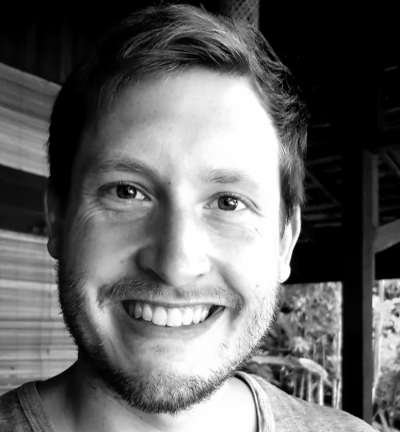- Graduate School GLOMAR
- PhD student members
- Christoph Witt
Christoph Witt
| Institution: | University of Bremen |
| Office: | MARUM I, room 2370 |
| Phone: | +49 421 218 - 65669 |
| E-mail: | [Bitte aktivieren Sie Javascript] |
| Other webpage(s): | Christoph's MARUM web page |

PhD Project
Monitoring seafloor deformation and assessing landslide hazards associated with fluid pressures (Nice Slope)
Nice (France) and the Côte d’Azur in general are highly populated and touristy regions, where shoreline protection and safety are of the utmost importance. Sadly, the Nice area is not only famous for its pristine beaches but also for the catastrophic tsunamigenic submarine landslide that took place in 1979, causing several casualties as well as damages to on- and offshore infrastructure. A combination of several triggers such as high precipitation prior the failure and the resulting pore pressure increase in the Nice Slope as well as the anthropogenic influence due to overloading of sediments were made responsible for the collapse of the newly built airport/harbor extension. Since then many national and European studies have been conducted in order to better understand trigger mechanisms for slope failure and the likelihood of reoccurrence in the near future. However, the process occurring prior and during the initial failure are still poorly understood, since these factors cannot be monitored directly.
During my 3-year PhD position at MARUM I will be working in the “MODAL” project in close collaboration with the French Research Institute for Exploitation of the Sea (IFREMER) and the Géoazur. The main scientific objective of this project is to monitor seafloor deformation and assessing landslide hazards associated with fluid pressures at the Nice Slope. The topic of my study circles around the key-objectives of this project. In the beginning of my study I will be trying to unravel the links between groundwater charging, fluid pressure build-up and strain. In parallel, geotechnical testing on core samples will be carried out to simulate some of the effects measured in situ, e.g. earthquake tremor or aching owing to freshened fluids. As a final task, some of the in situ and laboratory results will be taken into numerical simulations to predict failure conditions.
Thesis Committee
| Prof. Dr. Achim Kopf | University of Bremen |
| Dr. Sylvia Stegmann | University of Bremen |
| Dr. Sebastien Garziglia | Institut Français de Recherche pour l’Exploitation de la Mer (Ifremer), Brest, France |


